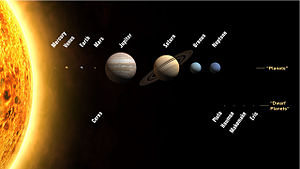The steady growth in the number of scientific papers being published is well-known, and largely reflects the increasing number of working scientists and their need to succeed in the “publish or perish” academic environment in which they find themselves. Publishers have responded with more journals, lower barriers to entry, and models that are clearly geared to supporting the “publish” imperative.
But what if all this activity is merely concealing a deeper problem — science that is less productive than it has been historically?
What if we’re riding the fumes of the past?
Two recent items point to this intriguing possibility.
One paper, published about a year ago in the journal Scientometrics, sought to measure discovery — not merely scientific output (i.e., publishing) — and quantify ease of discovery over long time periods. The author, Samuel Arbesman, looked at three areas of discovery: new mammalian species, new chemical elements, and new minor planets.

The core issue is that of “low-hanging fruit.” There is only so much we can discover within any particular field. As Arbesman writes:
. . . an illustrative example is that of the discovery of major internal organs within the human body. This process proceeded from ancient times until the discovery of the parathyroid gland within humans in 1880 by Ivar Sandström, the last major organ to be discovered.
Arbesman’s areas of study (planets, chemical elements, and mammalian species) are similar in a number of ways — they are finite, they hold little low-hanging fruit any longer, and they are fields with long legacies.
Arbesman finds discovery curves that straight-line southeast just like the one shown above for drug discovery, but each along an interesting physical dimension — namely, size. Larger mammals, larger chemical elements, and larger planets were first discovered. Now, each field is finding smaller and smaller items, as well as fewer of them. Scientific discovery has become more difficult and lower-yield in these fields.

Extrapolating from these observations, it’s interesting to ponder the paradigm shifts of science on a macro level. After all, if each field is finite, then the way for science to continue to be high-yield is to shift paradigms so that new perspectives and new discoveries can emanate from new ways of looking at things.
Yet that macro level seems to be headed southeast, as well, at least as I think about it — that is, each new paradigm is getting smaller and smaller, more and more niche, more specialized, and lower yield. Within a few hundred years, we went from categorizing kingdom, phylum, and species to quantum mechanics, microtransistors, and nanotubes.
As the drug discovery curve above shows, medicine has followed a similar, narrowing path, from the major breakthroughs like penicillin and sulfa drugs to lower-yield niche and chemotherapeutic regimens.
NASA itself recently felt this law of diminishing returns, with its major payload of benefits delivered with satellites, the moon landing, and Skylab, while recent advances (rovers, the Hubble, and deep probes) have provided fascinating data but not the large, obvious benefits of the early days.
And what if science becomes — or has become — lower-yield? Is that a reason to reconsider funding policies? Rationally, looking at the cost-benefit may already have effects on resource and funding allocations.
Is it unreasonable to assume that science will continue to produce large, demonstrable advances and insights of the size and importance of the major breakthroughs?
As Paul Kedrosky writes in his post on this same topic (which inspired this little essay):
Yes, things are getting harder, and they will continue to do so. And I’m not in the camp that says we have an inexhaustible supply of anything just waiting for human ingenuity to be applied. But it’s worth reminding ourselves, especially with the current spate of stories about declining innovation, that we need to be careful about where the real scarcity lies — cleverness, not capital.
Discussion
13 Thoughts on "What Happens If Science Becomes a Low-Yield Activity?"
Not sure I’d go so far as to declare an end to discovery on major levels, as the hubris involved reminds me of this quote:
“Inventions reached their limit long ago, and I see no hope for further development.” The speaker? Julius Sextus Frontinus, prominent Roman engineer (c. 40-103 AD). I was tempted to also include the famous “everything that can be invented has been invented,” from patent commissioner Charles Duell, but this is apparently a probably dubious quotation.
Revelations about epigenetics and the many roles of RNA in the last ten years have massively changed our understanding of gene regulation as just one example of a recent discovery that goes beyond “fumes”. We’re also on the verge of a new revolution, where we go from a reductionist approach to a systems approach. We’re just reaching the point where our technology is sophisticated enough to start giving us a view of the big picture. Computational and imaging approaches are letting us think in terms of gene networks, rather than genes, of whole organisms rather than cells. These systems approaches are likely to be mined for great understanding in the near future.
I do feel we’re in something of a transitional period, but I think there are plenty of big questions out there that still need answering. We’re seeing a merging of fields, chemistry, physics, computation and biology all coming together to form a greater whole.
I was taught–and still believe–that hypotheses beget hypotheses and that intellectual discovery is like an expanding universe.
But “yield” can be measured in different ways. Your first pharma example looks at the decline in R&D funding, a trend that may reflect a different approach to new product discovery, and perhaps growing economic pressures to become more efficient.
The second figure exemplifies descriptive science and we’d expect it to yield lower and lower returns as planets and species and elements are cataloged and classified.
Neither of these examples reflects the growth of science as an hypothesis-generator, and it is here where real understanding and meaning of our universe is held.
The pharma example shows how effective R&D spending has been, and it’s declining. That is, pharmaceutical researchers are spending more money to find fewer drugs.
I’m not sure what to make of dollars/drug as a metric. Perhaps we’re just using more sophisticated and expensive methods to discover things. Also, one shouldn’t mistake the motives and actions of a pharmaceutical company with science and the pure pursuit of knowledge. Products may be harder to come by, but that’s not the same thing as discovery.
But that argument fails by assuming that all the money is/was spent the same way. FDA regulators are becoming harder to convince and demand far more safety/clinical evaluations in light of the Vioxx nightmare that arose after the drug was approved and widely released.
Wow – what a nice example of the use of intentionally misleading graphics!
Notice that Figure 1c shows the *inverse* atomic weight of new elements discovered. In other words, we’re discovering larger and heavier elements. But I guess a downwards slope fits better with the authors “going downhill” narrative. Yuck!
Heck, Figure 1a is just as bad – what it doesn’t show is that the *number* of planets being discovered is steadily increasing, and that we’re getting closer and closer to discovering earth-size planets. I.e. discovery of extrasolar planets is getting FASTER and BETTER.
“Decline” my ass – I don’t know how this crap ever got published…
Bigger and heavier elements are harder to discover. In fact, we’ve been outside the realm of naturally occurring heavy elements for a while now, which is why so many of the new ones exist in particle accelerators for the blink of an eye before degrading away. It seems proper in a paper describing the ease of discovery.
Your critique of 1a has some validity. However, we found earth-sized planets reliably around the 1950s. The chart shows that we’re now finding planets that are a fraction of the size of Earth. So, we’re finding more space junk from a planetary perspective, one could posit. Maybe it’ll help us someday, but we’re probably learning very little from finding 5km-sized minor planets at this point.
As for this getting published, perhaps you might want to read the paper instead of just critiquing the graphics.
Yes, those graphics are deceiving. In addition, a priori you could argue that increased efficiency allows for smaller discovery.
The fact is that as the two first commenters says, the scope of our integrative theories increases. General relativity is so much more than newton gravity, even if it was wasteful to “rediscover” old facts.
The only way to look at internal efficiency is how active (fruitful, useful) science is; it is after all a tool for increased knowledge that relies on knowledge. In that regard, science is more useful than ever, more scientists and more papers.
The only way to look at external efficiency is how active (fruitful, useful) science is; it is after all a tool for increased knowledge that is used by society. In that regard, science is more useful than ever, more investments (so more scientists et cetera) and more products (electronics et cetera).
Nitpick:
“we found earth-sized planets reliably around the 1950s.”
The first exoplanets weren’t found until the 1990s. The only minor exoplanets found, are those first exceptional pulsar remnants.
Planets and exoplanets don’t place on the same plot, as their different name suggests. That _is_ why the astronomical society still distinguish between them; they are discovered by different means.
“And what if science becomes — or has become — lower-yield? ”
You seem to conclude this from 2 figures designed to have a negative slope.
Why don’t you just plot “INVERSE average life expectancy” vs DOB for the last 2000 years to argue for the return of leaches.
forget the graphs .. look at the culture of science in the west .. fear-bound, beholden to funding or tenure decisions, with the fundamentalism of religions, in fact, it is a new religion .. and so quick to mock what is not “scientific” …
have i mentioned hubris yet?
As someone who actually does the science of science I would say that this post raises the right questions but offers trivial answers. Science is a highly non-linear realm, where tiny niches can blow up to be very big, sometimes literally.
Of course the things being discovered today could not have been discovered in 1600, or 1800, but that surely is not an important finding. We have monster mysteries, like dark energy/matter and the missing Higgs boson. We have bow waves of innovation, like genomics, neural stuff, social network analysis and nano.
What does it all add up to? It might be nice to recognize that some of us out here are working that problem, a lot of us actually. Two down sloping linear graphs do not sum up the science of science. How could they?
This post makes me think of Kuhn’s distinction between “normal” science within an established paradigm and the revolutionary paradigm-shifts that happen rarely but have profound effects on how science progresses thereafter. The law of diminishing returns undoubtedly applies to the former, but not the latter. Within normal science I wonder about the cost/benefit analysis of research in, say, cancer or fusion energy, which has attracted gobs of money over long periods of time but has produced fewer and fewer striking new advances. When is enough enough? String theory evidently was a paradigm-shifting innovation, but after some twenty years of intense investigation it has yet to subjected to any empirical test, which leads one to wonder how long this game can be played before people lose patience with it.
But the post also makes me consider how the law of diminishing returns applies in other domains as well. Consider my sport of competitive swimming. The laws of physics suggest that there is a limit to how fast a human body can propel itself through the water, and as that limit is neared, greater effort is required to achieve ever smaller increments in world records, and fewer people are capable of breaking records. (Artificial aids came to the rescue for a while, as the high-tech swim suits allowed swimmers to set over 200 worlds records in the two years preceding the banning of the suits; significantly, not a single world record has fallen in the little more than a year since the ban took effect.) Nevertheless, the lure of breaking records affects how everyone in competitive swimming is coached, so that now physical injuries are much more common because of excess stress on the body from increased yardage in practices than used to happen in this sport when I competed in college in the 1960s. The law of diminishing returns applies here, but the ambition to succeed here, as in science, has real costs for human society in foregone opportunities for use of funding (in science) or time (in swimming).




